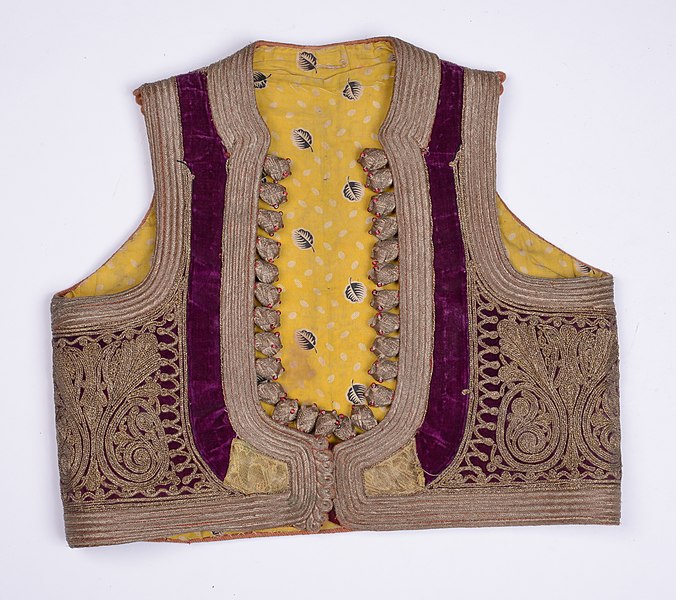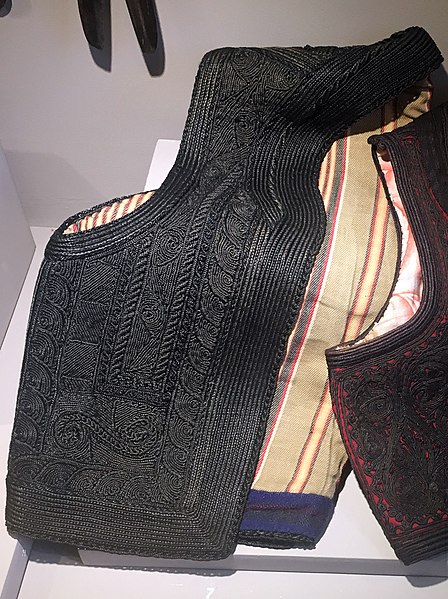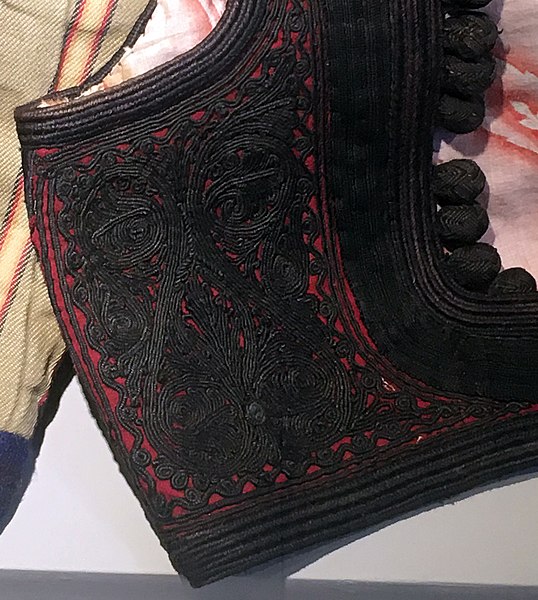“Gusta mi magla padnala”
Serbian Traditional Folk Song
SONG INFO & LYRICS
This old folk song belongs to an opus of Serbian traditional songs from the Kosovo and Metohija region in Serbia. It originated in the town of Štrpce (Штрпце), in the the Sirinić District (Сиринићка жупа).
Before we proceed to the song itself, let’s take a quick look at the town’s name: Štrpce (pronounced as Sh-trp-TSEH). Note that there are five tightly packed consonants (Sh – t – r – p – c) that you have to conquer before you get to an ‘e’ – the single vowel in the entire word!
One of the common features of Serbian language are words consisting of tight clusters with three or four consonants glued together, followed by a single vowel, syllable or a group of syllables.
A person in Serbia looking at the street sign with a perplexed look on their face is most likely a foreign tourist wondering whether it’s possible to pronounce the street name at all or if there is a spelling error in the street sign!
Many words do not even have a single vowel, such as in:
vrt (garden)
prst (finger)
krst (cross)
grm (bush)
trn (thorn)
krt (brittle)
strm (steep)
etc.
The crucial common factor for such words is that they all contain the letter “r” and the secret for the correct pronunciation is in the rolled “r” which takes on itself the function of a vowel.
Non-native speakers, often unable to properly pronounce such words, would add an “e” sound before the “r” to soften them so they can pronounce the entire word without stumbling or breaking their tongue. That is the reason why an “e” appears in the word “Serbia” after all, even though in Serbian it is written as: Srbija.
By examining features of such words language researchers and especially the etymologists are able to decipher the source language and explain the original meaning for many words of a “supposedly” unknown origin.
Many ancient toponyms and geonyms are scattered all throughout the Helm peninsula. Names for numerous rivers, mountains, villages and regions, specifically in present day Albania and Greece, have no relation whatsoever to modern Greek and Albanian languages, however when deciphered by the etymologists, a revealed original meaning turned out to be equivalent to their meaning in the archaic ‘Slavic’ language.
It is well known by historians that in the early Twentieth Century a state-wide renaming campaign was launched in Greece with an aim at artificially replacing all the traditional toponyms and geonyms that have been in use by local population for centuries as well as eradicating any “undesired” local languages by removing them from schools and forcing the locals to speak only the “official language” even at their own homes.
In present day Albania and in what is known by some as a so-called “Kosova” these “issues” were taken care of in a much more “effective” way. Suffice to say that there is practically no original population living in those lands anymore.
Apparently the strong ties and friendship between the Greek and Serbian people that brought an end to the rule of the Ottoman Empire in Europe and ultimately defeated it were not in the best interest of corrupt political “elites” of the day.
Sadly, just by looking at today’s societies and the ruling business and political classes around the world one can come to a sad conclusion that nothing has changed to this day: Divide et impera.
* * * * * * *
Back to the music:
This folk song was traditionally sung by young women at wedding celebrations, usually while they were helping the bride to get dressed for the wedding ceremony. The story is narrated by a young woman, a bride in anticipation of her wedding day, as she watches a tailor sewing her wedding outfit.
“Gusta mi magla padnala” is one of the most popular Serbian folk songs and hundreds of versions have been recorded by various artists and ensembles across the world so it is quite a difficult task to select a single performance as a perfect example.
To showcase the song I have selected a few different versions ranging from the classic traditional performances to more modern interpretations, including a male vocal duet and a “Berklee-style” jazzy arrangement.
“Gusta mi magla padnala” by folk singer Mara Djordjevic & Dushan Radetic Sextet:
https://www.youtube.com/watch?v=sp_b4W7iXq8
“Gusta mi magla padnala” by the folk ensemble Belo Platno:
https://www.youtube.com/watch?v=tecQs5ria0c
“Gusta mi magla padnala” by the ensemble Iskon & Friends:
https://youtube.com/watch?v=g_qYaWSO7V4
“Gusta mi magla padnala” by the famed vocal duo Teofilovic brothers:
https://www.youtube.com/watch?v=VL2WnqvpP5s
“Gusta mi magla padnala” by the Pletenitsa Balkan Choir and the Berklee Middle Eastern Festival Band:
https://www.youtube.com/watch?v=Uv-bHu-tj-w
One aspect of this song that always intrigued me is that the melody and general mood of the music did not seem to reflect the song’s purpose very well. For a wedding song one would expect a much more festive mood, perhaps a more upbeat rhythm or even some brighter lyrics.
Even with all the hardships and turmoils surrounding daily life under the rule of the Ottoman Empire and their ruthless treatment of local population, one would expect some moments of joy and excitement to elude the invaders’ strict control. Except if any sign of discontent would be sanctioned and punished by the rulers so harshly so that the lyrics had to be skillfully woven in between the lines of a seemingly benign folk story. This is precisely the case with this song and the real story’s importance is the main reason why, along with many other folk songs, it would have been performed cautiously and away from the prying eyes and ears of the oppressors.
The song has two main parts – first of which is concerned with mourning of the lost freedom and the second part proceeds to deal with the actual wedding preparations. It was very common for many folk songs in those times that the introduction centered on acknowledging the slavery and mourning the liberty, before actually celebrating the main event.
This practice shows a strong determination for achieving the final liberation from the invaders, even if it took many generations’ efforts, as it actually did.
Let’s take a look into the lyrics:
Gusta mi magla padnala (“Густа ми магла паднала”)
SONG LYRICS
Густа ми магла паднала, море,
Густа ми магла паднала.
На тој ми рамно Косово, море,
На тој ми рамно Косово.
Ништа се живо не види, море,
Ништа се живо не види.
До једно дрво високо, море,
До једно дрво високо.
Под њег ми седив терзије, море,
Под њег ми седив терзије.
Они ми шијев јелече, море,
Они ми шијев јелече.
Кол’ко су sвезде на небо, море,
Кол’ко су sвезде на небо.
Тол’ко су шарке на њега, море,
Тол’ко су шарке на њега.
My (condensed) English translation:
A dense fog has fallen down,
Upon this plane Kosovo field.
Nothing can be seen,
but one tall tree.
A tailor is sitting under (the tree).
He is sewing a vest for me.
As many stars there are in the sky,
that many colors* are on the vest.
(* colorful decorations, ornaments, patterns)
The lyrics are traditionally sung in an archaic dialect of the Serbian language as spoken in the area. Many words are not commonly used in modern Serbian language, at least not in the form as they appear in the text (underlined):
Густа ми магла паднала
На тој ми рамно Косово
…
Под њег ми седив терзије, морe
Они ми шијев јелече, море
Кол’ко су sвезде на небо, море
Тол’ко су шарке на њега, море
The word „sвезде“ (meaning: stars) is my favorite in the entire text. It features a letter “s“ which is a leftover from the ancient Old Slavonic alphabet and while it is not anymore used in contemporary Serbian Cyrillic alphabet it is still present in the contemporary Macedonian Cyrillic alphabet. Although written identically as a Latin alphabet letter “s“ it is in this case pronounced as a fused sound of a voiced vowel “dz“.
The opening lines „A dense fog has fallen down, upon this plane Kosovo field“ immediately create a dark, cold and bleak picture in mind: the one of a desolate, barren landscape – a colorless, lifeless void shrouded in thick fog. The unknown poet exhibits such a clever way to metaphorically describe in just a few words a life in misery and a burden of slavery under the oppressors‘ ruthless, bloody rule. An oppression that lasted for generations, for hundreds of years.
The song continues with „Nothing can be seen“ symbolically acknowledging a hopeless existence without even a slightest sign of freedom in sight.
The fact that these opening lines appear frequently in other folk songs from Kosovo and Metohija region indicates a common suffering of people all over their lands as well as their connectedness and unity.
But as hope never dies, so „one tall tree“ suddenly appears seemingly out of nowhere. A tree that rises defiantly high above a dense fog, such as a strong spirit of the people determined to defy all oppressors‘ efforts at destroying them.
By being embedded in wedding songs these lines were clearly meant to be repeated as a kind of mantra and to serve as a constant reminder of peoples’ strong will and determination not to succumb to the oppressors‘ atrocities and to patiently wait for the eventual liberation.
There are hundreds of examples of inhuman, barbaric and violent treatment of local population by the Ottoman aggressors – from depriving them of the basic human rights, forcible religious conversions, permanent separation of children from their families to harsh punishments, mass killings and outright acts of genocide.
The oppressors strove incessantly to exert their authority in every aspect of life and to humiliate the locals whenever possible. One of the lesser known examples of such practice was that local men were banned from growing beards. Such signs of masculinity had to be reserved solely for the rulers. Another example is that the locals could only ride mares while horses were the rulers’ exclusive privilege. Furthermore, if a horse-riding Turk would be approaching on the road – the local had to get off his mare and wait until the strongman has passed along his way, before been allowed to continue with his own business.
Unfortunately, to this very day the native, autochthonous Serbian inhabitants in the Serbian province of Kosovo and Metohija are still being treated as second class citizens on their own land.
While the surface layer of the remaining sections obviously depict preparations for a wedding celebration – a hidden meaning of a deeper layer calls for preparations to unite and fight for freedom.
The first two lines are clearly setting the stage for the inevitable uprising: „A tailor sitting under (the tree) …“ represents a strong leader who will inspire, encourage and prepare people for the uprising.
The final two lines are acknowledging the unity:
Аs many stars there are in the sky,
that many colors are on the vest.
and thus quietly implying the unspoken essence: as many stars on the sky – that many warriors will defeat the oppressors.
* * * * * * *
“Jelek“ or “Јелек“ (pronounced as “YEH-lekh) is a short vest worn by both men and women as a part of traditional folk outfits. It remained a common part of the daily outfits until the Mid-Twentieth Century when the modern Western dressing styles became prevalent.

Women’s jelek (front) – XIX Century – from the collection of National Museum in Leskovac, Serbia.

Women’s jelek (back) – XIX Century – from the collection of National Museum in Leskovac, Serbia.

Upper part of women’s traditional outfit, including the jelek vest. From the collection of the National Museum in Krusevac, Serbia.
As indicated above in the English translation of the lyrics – the word „шарке“ although translated as „colors“ actually means: (colorful) decorations, ornaments or patterns.
Elements of decoration on these traditional folk garments featured elaborate embellishments such as floral motifs and geometric shapes. Compared to other parts of traditional outfits the jeleks were not necessarily the most colorful ones but certainly the ones featuring some of the most intricate decorations. A special attention given to their embellishments is naturally preconditioned by their placement around the upper torso and especially on the chest – a body‘s focal point that attracts particular attention.
These traditional vests in different regions had their own specific shapes, embellishments, colors and other details. Vests worn by girls and women were generally much more richly decorated and colorful than the ones worn by men.

Upper part of men‘s traditional folk outfit, including the jelek. From the collection of National Museum in Krusevac, Serbia.
 Men’s jelek – detail. From the collection of National Museum in Krusevac, Serbia.
Men’s jelek – detail. From the collection of National Museum in Krusevac, Serbia.

Men’s jelek – detail. From the collection of National Museum in Krusevac, Serbia.
Many of the ornaments, patterns and even colors carried within themselves a symbolic meaning. Social status was „weaved“ into these vests in a form of a number of certain decorations which would indicate how wealthy the family of the wearer was. This embedded symbolism is common to virtually all other traditional garments as well.
Finally, the closing two lines of the song lyrics reveal the unknown author‘s incredibly ingenious way to keep alive the idea of unity in people‘s minds for centuries to come. A visual connection of this additional layer of symbolism to the richly decorated piece of traditional outfit that virtually everyone wears ensures that the fellow compatriots will be reminded every time they look at each other‘s outfits. However, infusing the message into a beloved song transforms it into a kind of an oral tradition that gets reawakened at every gathering or celebration.
* * * * * * *
Back to the music again:
The rhythmic pattern is based on a typical 7/8 time signature and the melodic structure in its simplified form rests on four short two-bar vocal melodic lines that are preceded by an 8-bar instrumental theme. This simple instrumental-vocal cycle is then repeated for each verse of the lyrics. However, the vocal section is often extended with an additional ninth bar which is obviously inserted in order allow the singer to extend the duration of the last note without having to rush into the next section. A similar extension is common for the instrumental sections which often feature short tail endings.
Below is my transcription of the vocal melody based on the interpretation by the late folk singer Mara Djordjević with Dušan Radetić Sextet from her classic 1950s recording:
( https://www.youtube.com/watch?v=sp_b4W7iXq8 )

Mara Djordjević was praised for her characteristic, yet authentic vocal style. Naturally, the actual phrasing varies in order to accommodate the lyrical content of each verse and, as explained above, the additional ninth bar allows her to comfortably and naturally extend the last note. An interesting moment caught my ear: while resolving the last melodic phrase in the seventh bar of each verse, she intentionally slides down into the last note (F#) over the quick „flat second“ scale degree (G) and not over an expected G#. This quick passing note (indicated in the transcription above with the red arrow) is so subtle that it is hardly noticeable but for a tiny moment it introduces the characteristic sound of the Phrygian mode which reinforces a dark, „minor“ mood and it allows the melody to conclude with an „Eastern“ flavor.
„Gusta mi magla padnala“ shares a very similar melodic motif with another folk song „Navali se Shar-planina“ which starts with a nearly identical 4-bar sequence. This similarity should not be a surprise as both songs originate in the same geographic area around the Shara Mountain (Шар-планина) which is located along the border of Serbia and North Macedonia. Both of these melodies could possibly owe their existence to another, even older source song. I would assume that the melodic line in „Gusta mi magla padnala“ is older as it is shorter and simpler while the extended melody in „Navali se Shar-planina“ seems to be a later development that was simply added in order to cover the longer lyrical content. In any case, both songs are a living proof of shared traditions between different regions and villages.
* * * * * * *
In my piano arrangement the instrumental and vocal themes are placed over a different chord progression which moves them away somewhat from the traditional sound. I have also introduced an additional instrumental theme that divides the song into three sections and acts as a moodsetter. In contrast to the Minor key mood of the song, this new theme resolves into a Major chord and thus brings in some lightness to the overall mood and creates a bit stronger, warmer finale.
“Gusta mi magla padnala” by Koshanin:
https://www.youtube.com/watch ?v=nB82Ect9GV8
In 2012 I have recorded another instrumental version from a live performance with a cellist Josie Phelan:
„Vest of stars“ (cover of „Gusta mi magla padnala“) by Koshanin (piano) & Josie Phelan (electric cello):
https://www.youtube.com/watch?v=vI6fX4R2_QE
My solo piano version of „Gusta mi magla padnala“ has been released in 2011 on my first solo piano album „Over Seven Seas“ which is available at my BandCamp online store:
Sheet music transcription for my solo piano version is also available at my BandCamp online store:
https://koshanin.bandcamp.com/merch/gusta-mi-magla-padnala-sheet-music-mp3-download
My Piano & Vocal arrangement for “Gusta mi magla padnala” is now also available at my BandCamp online store:
https://koshanin.bandcamp.com/merch/gusta-mi-magla-padnala-for-piano-and-vocal-sheet-music
Version 1 – with lyrics in Latin Alphabet:
Version 2 – with lyrics in Serbian Azbuka (Cyrillic) Alphabet
Copyright 2022 Koshanin. All rights reserved. Any copying, reproduction, or use, in part or full, without prior consent of the author is prohibited.


